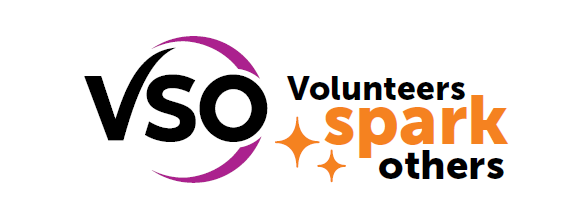Evaluation of twinning partnership: Nyagatare District Hospital (Rwanda) and Lewisham and Greenwich NHS Trust (UK)
VSO Health Practice area is delighted to share key learning and evidence from the pilot twinning partnership project between Nyagatare District Hospital, Rwanda and NHS Lewisham and Greenwich, London, UK.
Evaluation of twinning partnership: Executive Summary
This report assesses the impact of the twinning partnership between Nyagatare District Hospital (NDH) in Rwanda and Lewisham Sexual Health Services (LSHS) within Lewisham and Greenwich NHS Trust (LGT) in the UK.
The project aims to strengthen the sexual and reproductive health and rights (SRHR) services of both centres by building the capacity of local service providers through the reciprocal exchange of expertise and transfer of skills.
The partnership was initiated in April 2019 with support from VSO and financial support received through a Volunteering for Development (VfD) grant from the United Kingdom’s (UK) Foreign, Commonwealth and Development Office (FCDO).
The evaluation found that VSO has played a key role in brokering, facilitating and supporting the twinning partnership, including building trust between NDH and LSHS; supporting the relationship building; and establishing communication mechanisms.
The twinning partnership
- Is valued highly by key stakeholders in both sites and unites two similar institutions focusing on youth SRHR and facing similar challenges and support needs.
- Brings reciprocal benefits for both organisations.
- Demonstrates that the opportunity to see at first hand and learn from the practices of peers in other institutions in other locations encourages the reflection of professional practice and motivates clinicians to implement changes to improve services in their own institutions.
- Continues to rely heavily on a few key individuals and has not yet had time to develop into an institutional relationship between the twinned hospitals/service, with limited interaction between staff beyond the two project leads.
In relation to the impact on SRHR services delivered, key achievements included:
- Building the capacity of 58 clinicians and outreach staff at NDH to identify, detect and screen STIs as a result of training delivered following the exchange visit to LGT.
- Strengthening the clinical capacity of the NDH laboratory to international standards to test, diagnose and treat STIs, including gonorrhoea, HIV and infections such as hepatitis B&C. The laboratory at NDH is now recognised as one of the top three laboratories in Rwanda.
- Testing for gonorrhoea using microscopy (replacing symptomatic testing) at NDH and updating STI treatment protocols to use ceftriaxone to address microbial resistance.
- Testing 12,632 people in Nyagatare district for STIs over the duration of the project.
- Providing treatment to 412 people testing positive for hepatitis B; 290 people for hepatitis C; 74 people for gonorrhoea and 6 people who tested positive for HIV.
- Delivering community outreach on SRHR to 4,911 people, helping to reduce stigma associated with SRHR; improve parent-child communication on these issues; and improve access to accurate information on SRH, condoms and other forms of contraception, voluntary counselling and testing (VCT) and referrals to SRHR services for young people.
- Training 6 midwives in LGT to deliver post-natal contraception (PNC)to post-partum women, replicating the NDH model integrating SRHR into maternity services.
- Providing PNC to 39 women in LGT as a direct result of the project; 34 received PNC on the post-natal ward at the Waldron Clinic and 5 through the ‘Indigo team’ community midwife, working with especially vulnerable young women in the Community Hub health centre.
- Appointing 2 nursing ‘champions’ at LGT to work with the deaf community and make SRHR services more inclusive. These results have been achieved against the considerable challenges posed by the global Covid-19 pandemic –particularly for two health care institutions -and exacerbated by staff turnover. It is important to build upon these achievements and move from an individually-driven relationship to build a more institutional partnership.
Key priorities for the next phase of the project include:
- Establishing an effective monitoring, evaluation and learning (MEL) system to track and document project progress, including clear indicators to generate evidence, learning and assess outcomes and impact.
- Strengthening project-related communication and establishing mechanisms that support the participation of a broad cross-section of staff from both twin institutions to firmly embed the relationship and ensure its sustainability long term.
- Agreeing a longer term plan -in addition to a shorter term work plan –that outlines funding commitments; different partners’ roles as the relationship between the twinned institutions matures; and includes steps to ensure that NDH and LGT are able to take the work forward independent of VSO in the future.
- Establishing a more formalised project steering committee with agreed terms of reference to oversee the implementation of the twinning project; ensure stronger coordination of project activities; address any challenges; strengthen documentation and capture learning.
Although it is too early to draw conclusions about the long-term sustainability of the twinning partnership, there is encouraging evidence of the sustainability of practices, specifically relating to the improved clinical capacity of the laboratory and clinicians at NDH to accurately test, diagnose and treat more STIs.
The twinning partnership is also beginning to have an impact in Rwanda beyond NDH, as a result of learning from the project being shared through training to other hospitals. There is a similar opportunity to expand the reach of the project in LGT, with Queen Elizabeth Hospital in Greenwich requesting support from LGT to replicate the PNC model.
Reports
Evaluation of twinning partnership: Nyagatare District Hospital (Rwanda) and Lewisham and Greenwich NHS Trust (UK). March 2022. Full report. (PDF, 39 pages, 1.5 MB).
Executive summary (copy.of page text) March 2022.(PDF, 215 KB)
